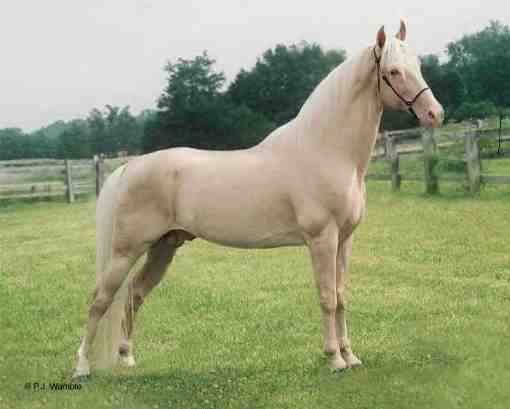 |
| Mmm, these guys take their sparkly seriously... (Photo linked through from here). |
As it turns out, the term champagne has at least one other use - it's a version of the SLC36A1 (solute carrier family 36, member 1) gene that interacts with the basic coat colour genes to product unusual and, most of the time, beautiful coat colours.
Now, the important things to remember when discussing genes are:
- Your horse has two copies of each gene*, one inherited from either parent;
- There are many different versions of each gene in the horse population, some of which can produce identical or nearly identical appearance and biological function, while other versions can produce a different coat colour or cause disease; and
- Each physical characteristic of your horse, including coat colour, results from the combined effects of the two copies of each gene, AND the interactions between a large number of different genes.
 |
| Champagne... or sparkly? A: chestnut, B: gold champagne, C: bay, D, amber champagne, E, black, F, classic champagne. Pic linked through from here. |
So how come they look that way? Basically, the champagne gene reduces the amount of pigment that your horse or pony produces. Both the red (pheomelanin) and black (eumelanin) pigments are affected. As with the cream coat colours, the mane and tail are often affected differently to body hair. As a bonus, the change in colour is often accompanied by a beautiful gleam - maybe this champagne should be called sparkly too!
 |
| Weird and wonderful. Foals with the champagne gene are born with blue eyes. Pic linked through from here. |
cream... when we are describing a horse, that is! (I like to think that my wise readers could spot the difference in the way they feel after drinking those two liquids.) This is especially true for golden champagne coat colouring (chestnut base colour) which can be very similar to palomino, and in some instances for amber champagne (bay/brown base colour) which can be very similar to buckskin. In these instances the horse's eye colour may provide a clue, or you could ask for a genetic test to confirm which genes are present.
 |
| EB's Wind Dancer, a stallion advertised as homozygous champagne (that means both copies of his SLC36A1 gene are versions that cause champagne coat colouring). Picture linked from here. |
Would you like to get your horse tested for champagne? Practical Horse Genetics has just added champagne testing to the list of DNA testing that we offer.
The version(s) of the SLC36A1 gene that create champagne coat colours were discovered by a team of scientists in the USA: Deborah Cook - who did the experiments, Samantha Brooks, Rebecca Bellone, and Ernie Bailey (links go to author publications on Pubmed and can include publications by other people with the same name). The full article is here, free of charge (bless 'em). This discovery came shortly after the sequencing of the horse genome. Thank-you, everyone involved in this research!
* Except for genes on the X and Y chromosomes in male horses, where there may be only one copy.

No comments:
Post a Comment